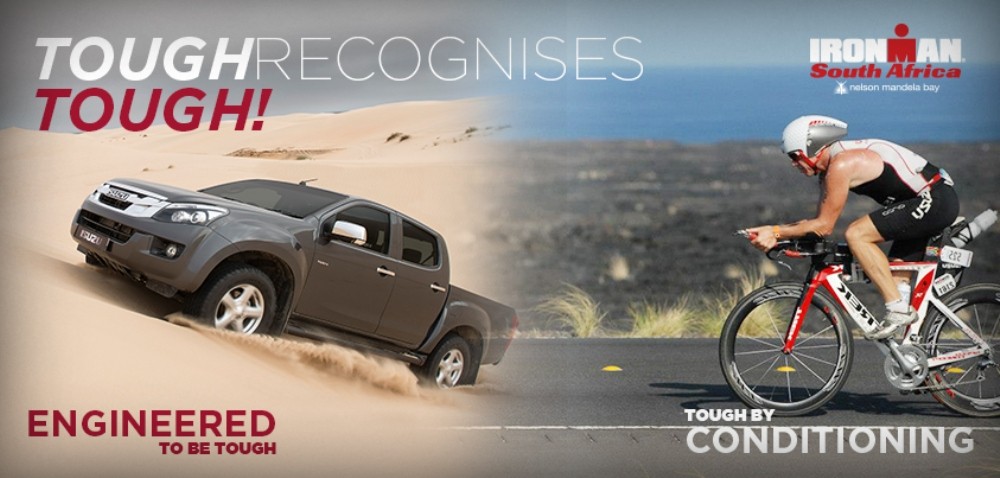Specific conditioning is perhaps the biggest missing ingredient in most Ironman training programmes and if you don’t focus on this key area, you will never achieve your full potential.
You can do all the running training in the world and be a world class runner, but you will never be able to perform at your best in the run, unless you ensure that you are conditioned for the bike leg and by that I mean being prepared for a 180km solo effort, the majority of the time being on the tri-bars.
If you don’t you will experience extreme muscular fatigue before you start the run and then there may be no way back, as you will be running the marathon in a serious state of fatigue. Having run numerous marathons, including the Comrades Marathon I can tell you from experience that an Ironman Marathon is a very tough challenge, both physically and mentally.
Hence it is important to consider what we can do to specifically condition ourselves for an Ironman Marathon and in this post I will focus on some of the physical aspects that I consider vital.
Core fitness is extremely vital! Having a strong core is instrumental in translating the power of the legs to propelling the entire body forward. This will improve efficiency which improves running. A strong core will help you in the swim, on the bike in the aero position and also on the run, so don’t neglect your core. If your core is weak your body, particularly on the run, is like a house of cards that will collapse under pressure.
Biking fitness is also vital as mentioned earlier and I am of the firm belief that it is a good bike that sets up a great run. Personally I’ve always prepared well on the bike, but have always held something back during the bike leg (except Las Vegas where I gambled and put it all out there on the bike but that was a 70.3), seeking to set up a decent run. This is really tough to get right, as you have to swallow your pride somewhat and forgo racing on the bike. It’s a tough ask when somebody you know comes past, especially if you believe you are stronger than they are and it can be compounded somewhat when they throw in a chirp or too as well.
One of the key challenges facing Ironman participants (particularly professionals and age group racers) is the fact that the IM Marathon is actually quite slow. A 50yo age grouper for example would ‘only’ need to race at 5 min/km.
So your normal speed-work will make you more efficient, but it won’t ensure you are specifically conditioned for your race. Hence we need to do some training at ‘race pace’, but the 50 yo would probably be doing most of his easy runs at 5 min/km which is hardly going to prepare him for how tough 5 min/km will be in an IM Marathon.
We could introduce some ‘brick’ sessions to assist us to narrow the gap between our race pace and our speed-work pace. An idea would be to do a steady bike ride (or longish ride) prior to the speed session, which should slow your pace down somewhat but not the effort, which is what we want if we are trying to simulate race conditions.
Another idea would be to ‘deaden’ the legs with a speed session or 5km steady run, then do a 2-3 hour bike ride at IM pace and then to run 10-15km off the bike at IM running race pace. I introduced Raynard Tissink to this type of session and it not only helped simulate race conditions, but also helped improve self confidence too.
Other methods of training ‘slower’ whilst still doing a quality workout, would be to do sessions with very short recoveries.
Pacing is also very important, so don’t gun it in the swim, or in the first hour on the bike, you will need all the energy that you can conserve for later in the day. Believe me seconds saved early on, could lead to minutes lost later on, invariably on the run, so remember that you are not racing anybody else, so stick to your plan and aim to beat the course and the elements.
Tapering fitness is all important, as arriving at the start line 90% fit and 100% healthy is far better than arriving 100% fit and 90% healthy, so be careful of overdoing it in the final month. Remember that you are tapering so that you can run well off the bike, not to record an awesome bike split, so stick to the game plan.

Long Rides provide endurance to set up the run
![]() The Riddle of an Ironman's Life
The Riddle of an Ironman's Life








![1174929_634108286611304_1718684164_n[1]](https://ironmansadotcom.wordpress.com/wp-content/uploads/2013/09/1174929_634108286611304_1718684164_n1.jpg?w=584)


![1234788_633217686700364_317431667_n[1]](https://ironmansadotcom.wordpress.com/wp-content/uploads/2013/09/1234788_633217686700364_317431667_n1.jpg?w=300&h=260)

